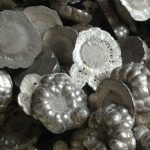Deprecated: get_settings is deprecated since version 2.1.0! Use get_option() instead. in /www/sites/alloy.wiki/index/wp-includes/functions.php on line 4862
The welding performance of titanium coils and heat exchangers has many notable characteristics. These welding characteristics are determined by the physical and chemical properties of titanium and titanium alloys.
1. The influence of gas and impurity pollution on welding performance
At room temperature, titanium and titanium alloys are relatively stable. However, the test results show that in the welding process, the liquid droplet and the molten pool metal have a strong effect of absorbing hydrogen, oxygen, and nitrogen, and in the solid state, these gases have already interacted with them. As the temperature increases, the ability of titanium and titanium alloys to absorb hydrogen, oxygen, and nitrogen also increases significantly. It starts to absorb hydrogen at about 250°C, absorbs oxygen at 400°C, and absorbs nitrogen at 600°C. After being absorbed, it will directly cause embrittlement of the welded joint, which is an extremely important factor affecting the quality of welding.
2. Cracks in welded joints
When welding titanium and titanium alloys, the possibility of hot cracks in the welded joint is very small. This is because the content of impurities such as S, P, and C in titanium and titanium alloys is very small, and the low melting point eutectic formed by S and P is not easy to appear in On the grain boundary, coupled with the narrow effective crystallization temperature range, the shrinkage of titanium and titanium alloys is small during solidification, and the weld metal will not produce thermal cracks. When welding titanium and titanium alloys, cold cracks can appear in the heat-affected zone, which is characterized by cracks occurring several hours or longer after welding, so it is also called delayed cracking. Studies have shown that this kind of crack is related to the diffusion of hydrogen during the welding process. During the welding process, hydrogen diffuses from the high-temperature deep pool to the lower-temperature heat-affected zone. The increase in hydrogen content increases the amount of TiH2 precipitated in this zone, which increases the brittleness of the heat-affected zone. In addition, the volume expansion during the precipitation of hydrides causes greater structural stress. , Coupled with the diffusion and accumulation of hydrogen atoms to the high-stress parts of the region, resulting in the formation of cracks. The method to prevent this delayed cracking is mainly to reduce the source of hydrogen in the welded joint.
3. Porosity in the weld
When welding titanium and titanium alloys, porosity is a common problem. The root cause of the formation of pores is the result of the influence of hydrogen. The formation of pores in the weld metal mainly affects the fatigue strength of the joint. The main technological measures to prevent pores are:
- 1) The protective gas should be pure, and the purity should not be less than 99.99%
- 2) Thoroughly remove organic matter such as oxide scale and oil stains on the surface of the weldment and the surface of the welding wire.
- 3) Apply good gas protection to the molten pool, and control the flow and flow rate of argon to prevent turbulence and affect the protection effect.
- 4) Correctly select the welding process parameters and increase the residence time of the molten pool to facilitate the escape of bubbles.
Link to this article:Welding requirements for titanium equipment such as titanium heat exchangers and titanium coils
Reprint Statement: If there are no special instructions, all articles on this site are original. Please indicate the source for reprinting:Alloy Wiki,thanks!^^


